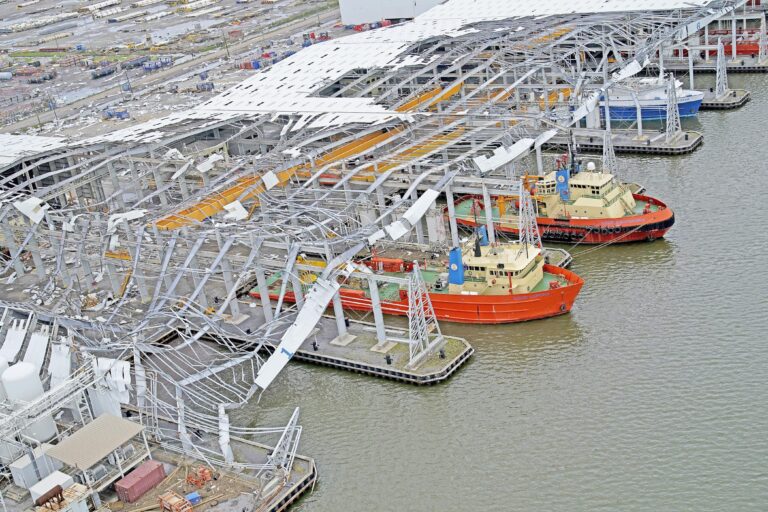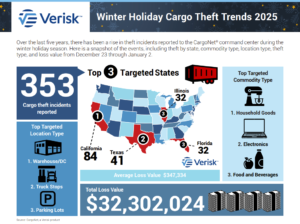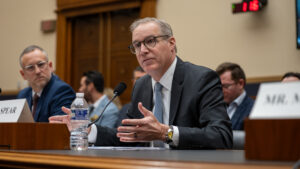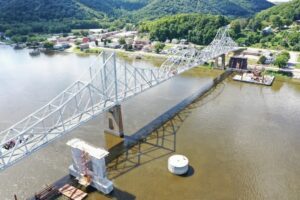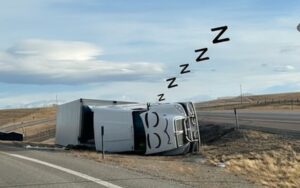NEW ORLEANS — Gasoline and diesel fuel shortages across Louisiana are causing extremely long lines at stations and growing frustrations.
All told, seven Louisiana refineries remained shuttered Wednesday.
Combined, they account for about 9% of all U.S. refining capacity, according to the U.S. Energy Department. Some refineries on the Mississippi River reported damage to their docks from barges that broke loose during the storm.
Louisiana Governor Jon Bell Edwards has asked the federal government for help.
“We need bulk fuel to be brought in before refineries come back on their own,” Edwards said, noting two-thirds of the state’s considerable refining capacity is down. “The state of Louisiana provides fuel for rest of country, and now it’s time for rest of country to give up a little of their fuel and send it back to Louisiana.”
Truck drivers supporting relief efforts tied to Hurricane Ida have been given a waiver from Hours of Service (HOS) rules.
The Federal Motor Carrier Safety Administration (FMCSA) issued the waiver earlier this week for Alabama, Arkansas, Louisiana, Mississippi, Tennessee and Texas. The declaration was effective immediately.
Under the emergency ruling, drive time caps are lifted for commercial vehicles under 49 CFR § 395.3 of the federal code, which covers hours of service. It covers truck drivers “providing direct assistance supporting emergency relief efforts transportation supplies, goods, equipment and fuel into the (affected states.)”
“Direct assistance terminates when a driver or commercial motor vehicle is used in interstate commerce to transport cargo or provide services that are not in support of emergency relief efforts related to Hurricane Ida,” the waiver says.
The waiver also covers section 395.5, which is for HOS restrictions on passenger-carrying vehicles, such as buses. Under federal safety rules, commercial truck drivers are limited to 14 on-duty hours after 10 consecutive off-hours duty.
The emergency waiver also covers the rule restricting drivers to 60 on duty hours in a 7-day period, or 70 hours in eight consecutive days.
Drivers are not exempted from speed limits, requirements to pull off the road if their alertness is impaired due to fatigue or other reasons, texting while driving or using alcohol or drugs.
Relief from the HOS rule is contingent upon providing what FMCSA refers to as “direct assistance.”
The waiver is in effect until either a declared end to the Ida-created emergency, or the end of the day on Sept. 28, whichever comes first.
Four days after Hurricane Ida struck, the storm’s aftermath — and progress in recovering from it — are being felt unevenly across affected communities in Louisiana. The levee system revamped after Katrina protected New Orleans from catastrophic flooding after Ida struck on Sunday with 150 mph winds, tied for the fifth-strongest hurricane to ever hit the mainland U.S.
The power was back on before dawn Thursday in parts of the city’s central business district, Uptown, Midtown, New Orleans East and the Carrollton area, the electricity company Entergy announced. Utility crews also restored power to Ochsner’s main hospital campus in Jefferson Parish and several hospitals near Baton Rouge. City crews completely cleared some New Orleans streets of fallen trees and debris, and a few corner stores reopened.
Outside New Orleans, neighborhoods remained flooded and residents were still reeling from damage to their homes and property. More than 1,200 people were walking through some of Ida’s hardest-hit communities to look for those needing help, according to the Louisiana Fire Marshal’s office. President Joe Biden was scheduled to visit Louisiana on Friday to survey the damage, the White House said.
Gayle Lawrence lost two cars, refrigerators and almost everything in her garage to floodwaters in southern Louisiana’s Plaquemines Parish. The garage was filled with marsh grass and dead fish. Scores of other homes in the neighborhood were also flooded.
“The house is solid. It didn’t even move. But when the water came up, it destroyed everything,” she said.
In Jefferson Parish, authorities on Wednesday were still waiting for floodwaters to recede enough for trucks carrying food, water and repair supplies to begin moving into Lafitte and other low-lying communities. The parish neighbors New Orleans and saw widespread destruction from Ida.
Parish President Cynthia Lee Sheng said a gas shortage was hampering hospital staff, food bank employees and other critical workers.
“Today, we’re a broken community,” Sheng told a news conference. “It won’t always be that way.”
Evacuees considering returning home to Terrebonne Parish were warned by emergency officials on Twitter that “there are no shelters, no electricity, very limited resources for food, gasoline and supplies and absolutely no medical services.”
The leader of Louisiana’s largest hospital system, Ochsner Health, is considering opening a field hospital somewhere in Terrebonne or Lafourche parish because the shuttering of most of the hospitals in the area removed about 250 to 300 beds. When “folks come back, this is going to definitely put a strain on the situation,” Ochsner President and CEO Warner Thomas told reporters.
Governor Edwards said he’s pleased that power returned for some people. It’s “critically important to show progress” after the storm, he said, while acknowledging that much more work lies ahead. Roughly 2,600 people remain in shelters, he said.
“I’m very mindful that it’s a start, and only a start,” he told a news conference.
As the staggering scope of the disaster began to come into focus, with a private firm estimating that total damage from Ida could exceed $50 billion, making it among the costliest U.S. hurricanes.
Ida’s remnants caused catastrophic flooding in New York City and surrounding areas and tornados struck around Philadelphia. At least nine deaths have been confirmed in the Northeast with officials warning there would be more once authorities confirm details.
But about 989,000 homes and businesses — 44% of all state utility customers in southeast Louisiana, from the New Orleans area to Baton Rouge — were without power, according to the state Public Service Commission. In neighboring Mississippi, more than 30,000 customers had no electricity. More than 600,000 people were without water.
Hard-hit areas in southeast Louisiana were under a heat advisory Thursday, with forecasters warning combined heat and humidity could make some areas feel like 106 degrees Fahrenheit (41 degrees Celsius).
New Orleans officials opened seven places where people could get a meal and sit in air conditioning. The city was also using 70 transit buses as cooling sites, Mayor LaToya Cantrell said.
Karen Evans charged electronic devices at a New Orleans gym where four tall fans stirred the air. Her home in the city was not damaged, but she was struggling without power.
“The great challenge is living a life in a sweltering place without air conditioning,” she said.
The Trucker Staff contributed to this report.
The Associated Press is an independent global news organization dedicated to factual reporting. Founded in 1846, AP today remains the most trusted source of fast, accurate, unbiased news in all formats and the essential provider of the technology and services vital to the news business. The Trucker Media Group is subscriber of The Associated Press has been granted the license to use this content on TheTrucker.com and The Trucker newspaper in accordance with its Content License Agreement with The Associated Press.








